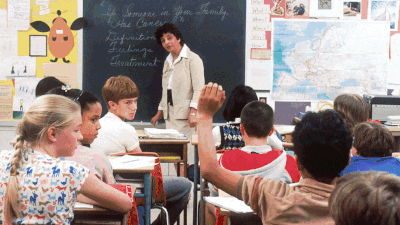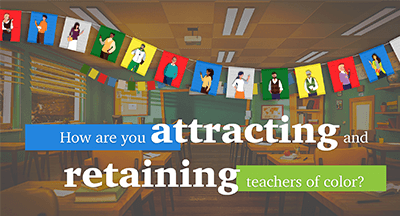Kids Are Weird—Let's Lean Into That
#Achievement
Lindsey Canny
by
Lindsey Canny

|
Lindsey Canny Edtech Thought Leader |

|

|

|
 |
Those weird and wonderful projects were successful because they acted as a vehicle for student personality and creativity that daily assignments generally didn’t, but who says daily assignments need to feel so everyday? Kids are weird, and the more weirdness that can be brought out by everyday learning, the better off schools and kids will be.
Unfortunately, education hasn’t always been known for wild and unbridled creativity and self-expression for students, which is complicated further by rigid curriculum and testing requirements that schools are mandated to fulfill. But even with something like Common Core State Standards, the requirements are only for the content that students need to learn, not the way in which they learn it. For all the discourse on learning styles, differentiation, and choice, the processes for assessment, data collection, and standardized testing remain diametrically opposed to that messaging. At the end, it winds up creating a system of learning to take a test and pass a class, rather than learning to learn.
Why is it hard to believe that students aren’t capable of choosing the avenues in which they can fulfill content learning requirements? To begin building educational pride-in-ownership, any part of learning that can be created from a student’s hands should be: lesson activities, study methods, test prep, assessments—anything. Not only will it give them an inherent sense of investment in their own learning, it will also provide a deeper understanding of how education itself is constructed. It’s the same principle of teaching a man to fish: If a kid reads a rubric, they learn to follow your expectations. If the kids write the rubric, they learn to create the expectations on their own.
This is all to say that stubborn disengagement will still exist, no matter how weird and wonderful education can get. But even though kids are weird, they’re not indecipherable. On the contrary, kids tend to be very overt about the things that capture their interests—it’s usually the things they’re doing in class instead of work. Kids are playing co-op games, playing chess, watching TikToks, drawing marker tattoos, zoning out to music—you name it. It’s easy to lament the distraction their devices provide, but hyperfocusing on controlling devices means short-sighting an alternate viewpoint on the issue: can those distractions be repackaged as learning? A caveat, however: the same-old schoolwork done on a cell phone is still just the same old schoolwork.
If students have limited agency over their learning, they are going to take their attention elsewhere. Students ultimately want to learn, however, and will learn on their own if they have the right application for the concepts. Need to learn color theory for art class? Why not explore that through creating makeup palettes or cake decorating? Want a student to demonstrate proficiency in applied math? Let them redecorate their room or refurbish a camper van! Let the students and their imaginations go wild. But, you know, with documentation—which is a great segue into familiarizing the students with the inner workings of their school’s learning management system. By allowing them the freedom to explore their passions and tracking what students choose, schools can get a true picture of the students’ interests and strengths, and where they could take these skills in their futures.
Leaning into the weirdness of kids can be scary, but it would be a disservice to let your fear get in their way. District leaders tend to take on an unwritten accountability to have irreproachable, tried-and-true educational practices happening under their purview. While this is an admirable aspiration, it unfortunately leads back to a trickle-down of rigidity and ultimate disconnect at the ground level. Giving up a portion of educational control to the young people is a big step into the unknown, but full transparency and authenticity paired with multiple avenues for feedback from all sides is the best step forward. Send a straightforward message: “We’re trying a process new to the district, and new to the students. There will be times when we’re figuring it out together, but there will always be a lesson learned and opportunity for growth.”
Now get out there and get weird.
Follow-up resource: A culture of student ownership
How can students take ownership of their learning? Make it a cultural shift.

|
Lindsey Canny Edtech Thought Leader |
|
|

|

|

|
 |










